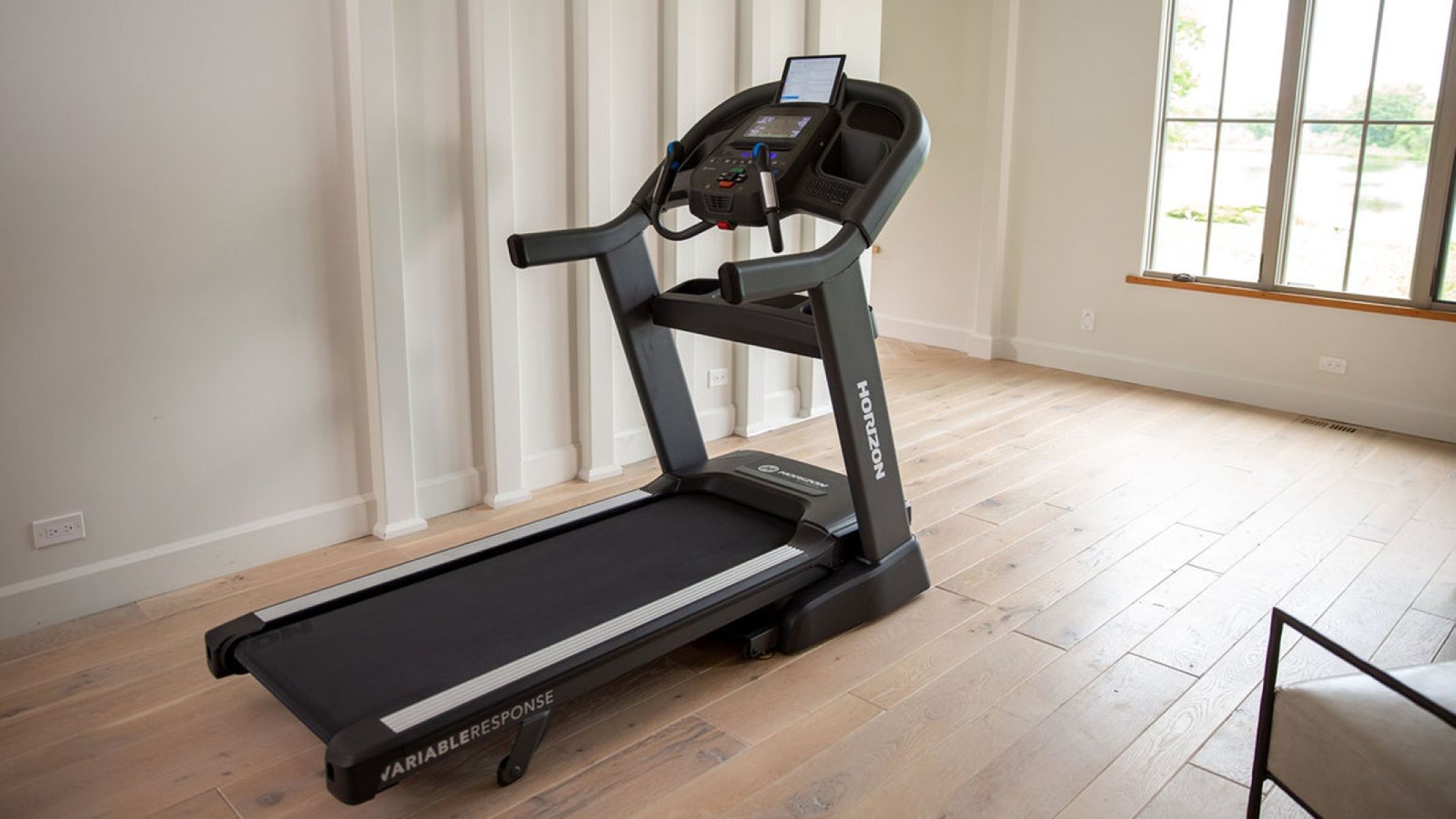Home>Misc>Featured>How Can I Tell If A Workout Dvd Is Cardio Or Interval Training


Featured
How Can I Tell If A Workout Dvd Is Cardio Or Interval Training
Modified: January 2, 2024
Discover how to determine if a featured workout DVD is cardio or interval training. Enhance your fitness routine with the right fitness regimen.
Introduction
When it comes to choosing a workout DVD, it’s important to know what type of training you’re getting yourself into. Two popular forms of exercise are cardio training and interval training, each with its own unique benefits and challenges. Cardio training focuses on steady-state aerobic exercises that increase your heart rate and improve overall cardiovascular health. On the other hand, interval training involves alternating between high-intensity bursts of activity and periods of rest or lower intensity. This type of training is known for its ability to improve endurance, burn calories, and boost metabolism.
As a savvy fitness enthusiast, it’s crucial to be able to determine whether a workout DVD is primarily cardiovascular or interval-based. This knowledge will help you choose the right program that aligns with your fitness goals and preferences. In this article, we’ll explore the key differences between cardio and interval training, and provide you with practical tips on how to identify if a workout DVD is designed for cardio or interval training.
Whether you’re looking to burn calories, improve your cardiovascular fitness, or simply shake up your exercise routine, understanding the distinction between cardio and interval training can be a game-changer. So, let’s dive in and equip you with the knowledge you need to make informed choices when selecting workout DVDs that best suit your fitness needs.
Understanding Cardio Training
Cardio training, short for cardiovascular training, is a form of exercise that primarily focuses on improving your heart and lung health. It involves performing continuous, rhythmic movements that raise your heart rate and keep it elevated for an extended period, usually 20 minutes or longer. Common examples of cardio exercises include running, cycling, swimming, and dancing.
The main goal of cardio training is to increase your body’s ability to deliver oxygen to your muscles, allowing them to work efficiently and effectively. This type of training strengthens your cardiovascular system, improving your lung capacity, lowering your resting heart rate, and enhancing overall endurance.
Engaging in regular cardio workouts offers a wide range of benefits. Firstly, it helps burn calories and contributes to weight loss, making it an excellent choice for those looking to shed extra pounds. Additionally, cardio training can help reduce the risk of chronic diseases such as heart disease, high blood pressure, and diabetes. It also boosts your mood by releasing endorphins, so it’s a great way to combat stress and improve mental well-being.
When it comes to cardio training, there are different intensity levels you can choose from. Low-intensity cardio exercises are characterized by a steady, moderate effort that allows you to sustain the activity for a longer duration without feeling too fatigued. Examples include brisk walking, leisurely cycling, or light swimming. On the other hand, high-intensity cardio workouts involve pushing your limits and working at a challenging pace for shorter bursts of time, such as sprinting or participating in intense aerobic classes.
Remember, the key aspect of cardio training is sustaining an elevated heart rate throughout the workout. It’s essential to find activities that you enjoy and can maintain consistently to reap the full benefits. Incorporating variety into your cardio routine by trying different exercises or utilizing workout DVDs keeps things exciting and prevents boredom.
Understanding Interval Training
Interval training is a workout method that involves alternating between periods of high-intensity exercise and periods of rest or lower intensity. This type of training challenges your body by pushing you to work at your maximum capacity during the intense intervals and allowing for recovery during the rest periods.
The main principle behind interval training is the concept of “time under tension.” By pushing yourself to exert maximum effort during specific intervals, you stimulate and challenge your cardiovascular system, muscles, and overall endurance. This type of training is known to improve aerobic and anaerobic fitness, increase metabolism, and boost fat burning.
Interval training can take different forms, depending on your fitness level and goals. High-intensity interval training (HIIT) is a popular variation that consists of short, intense bursts of exercise followed by brief recovery periods. Tabata training is another form of interval training that follows a specific structure of 20 seconds of all-out effort followed by 10 seconds of rest, repeated for a total of four minutes.
One of the significant benefits of interval training is that it allows you to achieve a high level of intensity in a relatively short amount of time. This makes it an efficient and time-effective workout option for individuals with busy schedules. Additionally, interval training stimulates the afterburn effect, also known as excess post-exercise oxygen consumption (EPOC). This means that even after your workout is complete, your body continues to burn calories at an elevated rate to restore itself to its pre-exercise state.
Interval training can be customized and adapted to various fitness levels. Beginners may start with longer rest intervals and shorter intense intervals, gradually increasing the intensity and reducing the rest periods as they become more conditioned. It is essential to listen to your body and progress at a pace that is sustainable and safe for you.
When incorporating interval training into your fitness routine, it’s crucial to choose exercises that work different muscle groups and incorporate compound movements. This ensures that you engage multiple muscle groups simultaneously and maximize the overall impact of the workout.
Key Differences Between Cardio and Interval Training
While both cardio training and interval training are effective forms of exercise, there are key differences that set them apart. Understanding these differences can help you determine which type of training aligns with your fitness goals and preferences. Here are the main distinctions between cardio and interval training:
- Intensity: One of the primary differences between cardio and interval training is the level of intensity. Cardio training typically involves a sustained, moderate intensity throughout the workout, aiming to keep your heart rate elevated within a specific target range. On the other hand, interval training incorporates periods of high-intensity exercise, pushing your body to its limits, followed by rest or lower intensity intervals.
- Time: Another differentiating factor is the duration of the workout. Cardio workouts often require a longer duration, typically ranging from 30 minutes to an hour, depending on your fitness level and goals. Interval training, however, can be more time-efficient, as you can achieve a challenging and effective workout in as little as 20 minutes or less.
- Calorie Burn: Both cardio and interval training contribute to calorie burn, but interval training tends to result in a higher calorie burn per minute. The intense bursts of exercise during interval training stimulate the metabolism and increase the post-workout calorie burn, even after the workout has ended.
- Endurance vs. Explosiveness: Cardio training is ideal for improving endurance, as it focuses on sustained effort over an extended period. It strengthens your cardiovascular system and allows you to sustain prolonged aerobic activities. Interval training, on the other hand, emphasizes explosiveness and anaerobic capacity. It helps improve your explosive power, speed, and ability to perform high-intensity exercises.
- Variety and Mental Engagement: Cardio workouts often involve continuous repetitive movements, such as jogging or cycling. In contrast, interval training allows for more variety, as you can switch between different exercises or modify the intensity levels within the workout. This variety can help keep you mentally engaged and prevent boredom.
It’s important to note that cardio training and interval training are not mutually exclusive. You can incorporate elements of both into your fitness routine to enjoy the benefits of both types of training. For example, you can start your workout with a cardio warm-up, followed by a series of interval training exercises, and end with a cool-down cardio session. This combination can provide a well-rounded and effective workout.
How to Determine if a Workout DVD is Cardio or Interval Training
When selecting a workout DVD, it’s important to determine whether it aligns with your desired training style and goals. Here are some practical tips to help you determine if a workout DVD is cardio or interval training:
- Read the Description: Start by reading the description or product details provided on the DVD packaging or online. Look for keywords like “cardio,” “interval,” “HIIT,” or “high-intensity.” These terms can give you a clue about the training style offered in the DVD.
- Check the Workout Format: Pay attention to the structure of the workout mentioned on the DVD. If it includes periods of high-intensity exercises followed by active recovery or rest intervals, it’s likely to be an interval training DVD. Alternatively, if it emphasizes sustained, continuous movement at a moderate intensity, it’s more likely to be a cardio-focused DVD.
- Consider the Instructor’s Background and Expertise: Research the instructor’s background and expertise. Some trainers are known for their expertise in specific training styles, such as high-intensity interval training or cardio dance workouts. This information can help you understand the emphasis of the DVD and what to expect from the workouts.
- Read Reviews and Testimonials: Look for reviews from individuals who have tried the workout DVD. Their feedback can provide valuable insights into the training style, intensity level, and effectiveness of the workouts. Pay attention to reviews that specifically mention cardio or interval training.
- Sneak Peek or Previews: If possible, watch a sneak peek or preview of the workout DVD before purchasing. This can give you a visual representation of the workout style, intensity, and exercises involved. Look for cues like fast-paced movements, interval timers, or descriptions of the workout structure.
It’s important to remember that fitness is subjective, and what works for one person may not work for another. Consider your fitness level, preferences, and any specific goals you have when selecting a workout DVD. It’s always helpful to choose a DVD that offers a variety of workouts, allowing you to mix and match different training styles to keep your routine engaging and effective.
Factors to Consider When Choosing a Workout DVD
Choosing the right workout DVD can greatly enhance your fitness journey and help you achieve your goals. Here are some essential factors to consider when selecting a workout DVD:
- Fitness Level: Consider your current fitness level and choose a workout DVD that aligns with your abilities. Look for DVDs that offer modifications or different intensity levels to cater to various fitness levels.
- Training Style: Determine the type of training style you prefer. Do you enjoy cardiovascular workouts, strength training, dance-based exercises, or a mix of different modalities? Consider what type of workouts motivate and excite you, and choose a DVD that incorporates those elements.
- Goals: Clarify your fitness goals. Are you looking to lose weight, build muscle, improve endurance, or enhance flexibility? Look for workout DVDs that specifically address your goals and provide exercises that target those areas.
- Workout Duration: Consider the length of the workouts and whether it fits into your schedule. If you have limited time, look for shorter workout options or DVDs that offer the flexibility to customize the workout length.
- Instructor’s Style: Pay attention to the instructor’s teaching style and personality. Some instructors may be more motivating and engaging for you, while others may not resonate with your preferences. Watching a preview or reading reviews can give you a sense of the instructor’s style.
- Equipment and Space: Determine what equipment, if any, is required for the workouts. Some DVDs may require dumbbells, resistance bands, or stability balls. Additionally, consider the space you have available for the workouts and choose a DVD that accommodates your environment.
- Variety and Progression: Look for DVDs that offer a variety of workouts or programs that include different types of exercises and progressions. This helps prevent boredom and allows for continuous improvement as you advance in your fitness journey.
- Reviews and Recommendations: Take the time to read reviews and recommendations from other users who have tried the workout DVD. Their insights can provide valuable information about the effectiveness, level of challenge, and overall satisfaction with the program.
- Price and Accessibility: Consider your budget and how accessible the workout DVD is for you. Determine whether it’s a one-time purchase or a subscription-based service and assess if the cost aligns with the value you expect to receive from the workouts.
By considering these factors, you can make an informed decision when choosing a workout DVD that suits your fitness level, preferences, and goals. Remember to listen to your body, progress at your own pace, and enjoy the journey towards a healthier and fitter you.
Summary
Choosing the right workout DVD that aligns with your fitness goals and preferences is crucial for a successful and enjoyable fitness journey. In this article, we explored the key differences between cardio and interval training, two popular forms of exercise. We discussed how cardio training focuses on sustaining a steady-state aerobic intensity to improve cardiovascular health and endurance, while interval training involves alternating between high-intensity bursts and rest periods to challenge the body and boost metabolism.
To determine if a workout DVD is cardio or interval training, we provided practical tips such as reading the description, checking the workout format, considering the instructor’s background, and reading reviews from other users. It’s important to understand your fitness level, training style preferences, and goals when making your selection.
Additionally, we discussed the factors to consider when choosing a workout DVD, including your fitness level, training style, goals, workout duration, instructor’s style, equipment and space requirements, variety and progression, reviews and recommendations, and price and accessibility. Taking these factors into account will help you find a workout DVD that suits your needs and keeps you motivated and engaged.
Remember, the key to a successful fitness journey is consistency and finding a workout routine that you enjoy. Whether you prefer cardio training, interval training, or a combination of both, the right workout DVD can guide you towards achieving your fitness goals and enjoying the countless benefits of regular exercise.
Conclusion
Choosing a workout DVD that suits your fitness goals and preferences is an important step in creating an effective and enjoyable exercise routine. Understanding the differences between cardio and interval training can help you make informed decisions when selecting a workout DVD. Cardio training focuses on steady-state aerobic exercises to improve cardiovascular health and endurance, while interval training incorporates high-intensity bursts that challenge the body and boost metabolism.
By considering factors such as your fitness level, training style, goals, workout duration, instructor’s style, equipment requirements, variety and progression, reviews, and price, you can find the perfect workout DVD to meet your needs. Paying attention to the description, workout format, instructor’s background, and reviews can provide valuable insights into whether a DVD is cardio or interval training-oriented.
Remember, there is no one-size-fits-all approach to fitness, and what works for one person may not work for another. It’s important to listen to your body, progress at your own pace, and find a workout style that you enjoy and can maintain consistently. The right workout DVD can bring excitement and variety to your fitness routine, making it easier to stay motivated and committed to your goals.
So, whether you’re seeking to improve cardiovascular health, increase endurance, burn calories, or simply add some fun to your workouts, the world of workout DVDs offers a wide range of options. Take the time to explore different programs, consider your fitness goals and preferences, and choose the workout DVD that best aligns with your needs. With dedication, consistency, and the guidance of a well-suited workout DVD, you’ll be well on your way to achieving your fitness goals and enjoying a healthier, more active lifestyle.







